Located on Tran Phu Street, the Phuc Kien Assembly Hall (also known as Phuc Kien Pagoda) is a popular stop for both domestic and international tourists visiting Hoi An Ancient Town.
This is the largest and oldest assembly hall in Hoi An, built in 1690 by immigrants from Fujian, China, who settled in the area.
According to the Quang Nam Tourism Promotion Center, the assembly hall was originally constructed entirely of wood and was only rebuilt with brick and tiled roofs in 1757, resulting in the structure we see today.
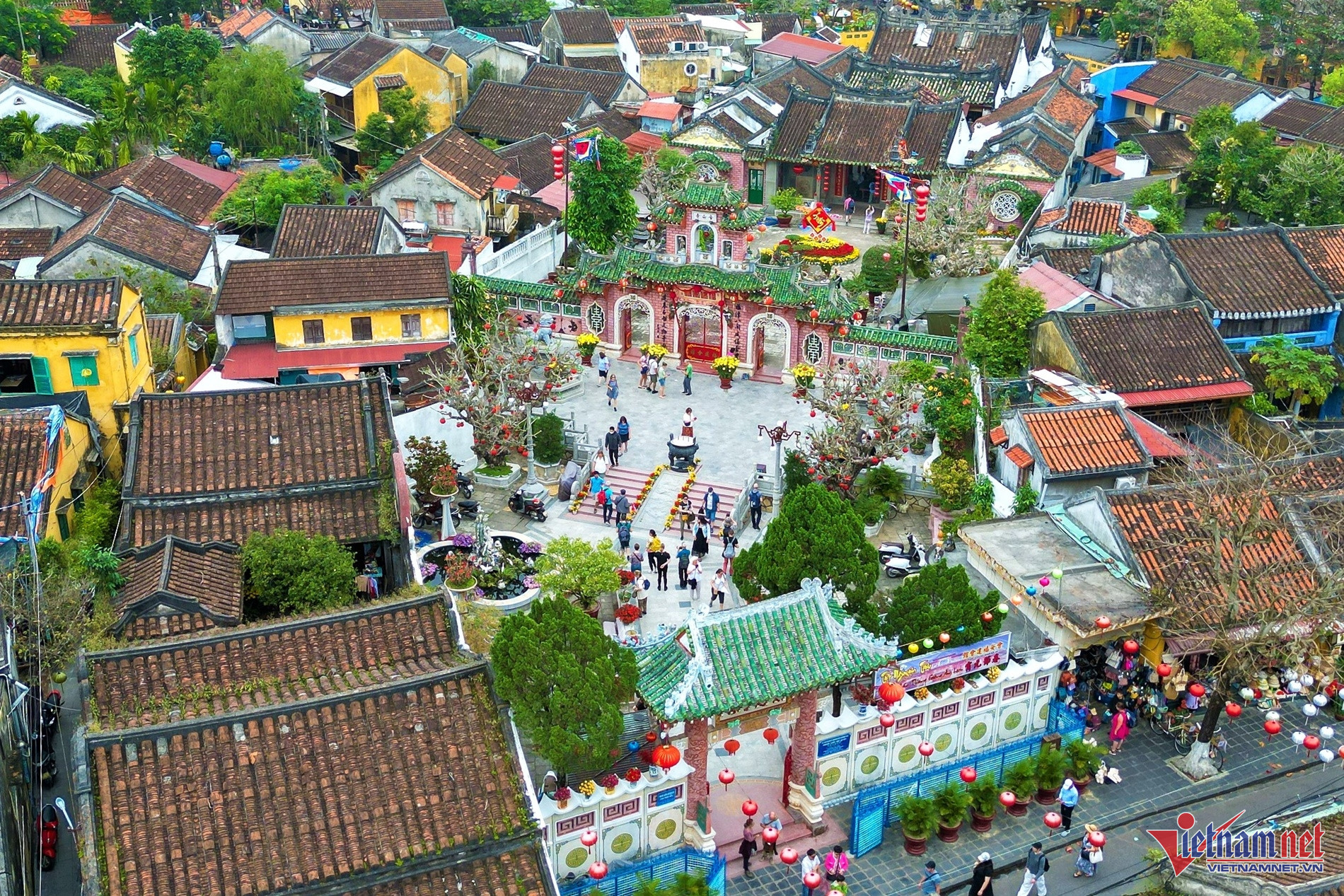
The Phuc Kien Assembly Hall is designed in the shape of the Chinese character for “three” (Tam). It consists of a series of three sections: the entrance gate, a courtyard, a small garden, two rows of houses on the east and west sides, the main hall, a rear courtyard, and a back hall.
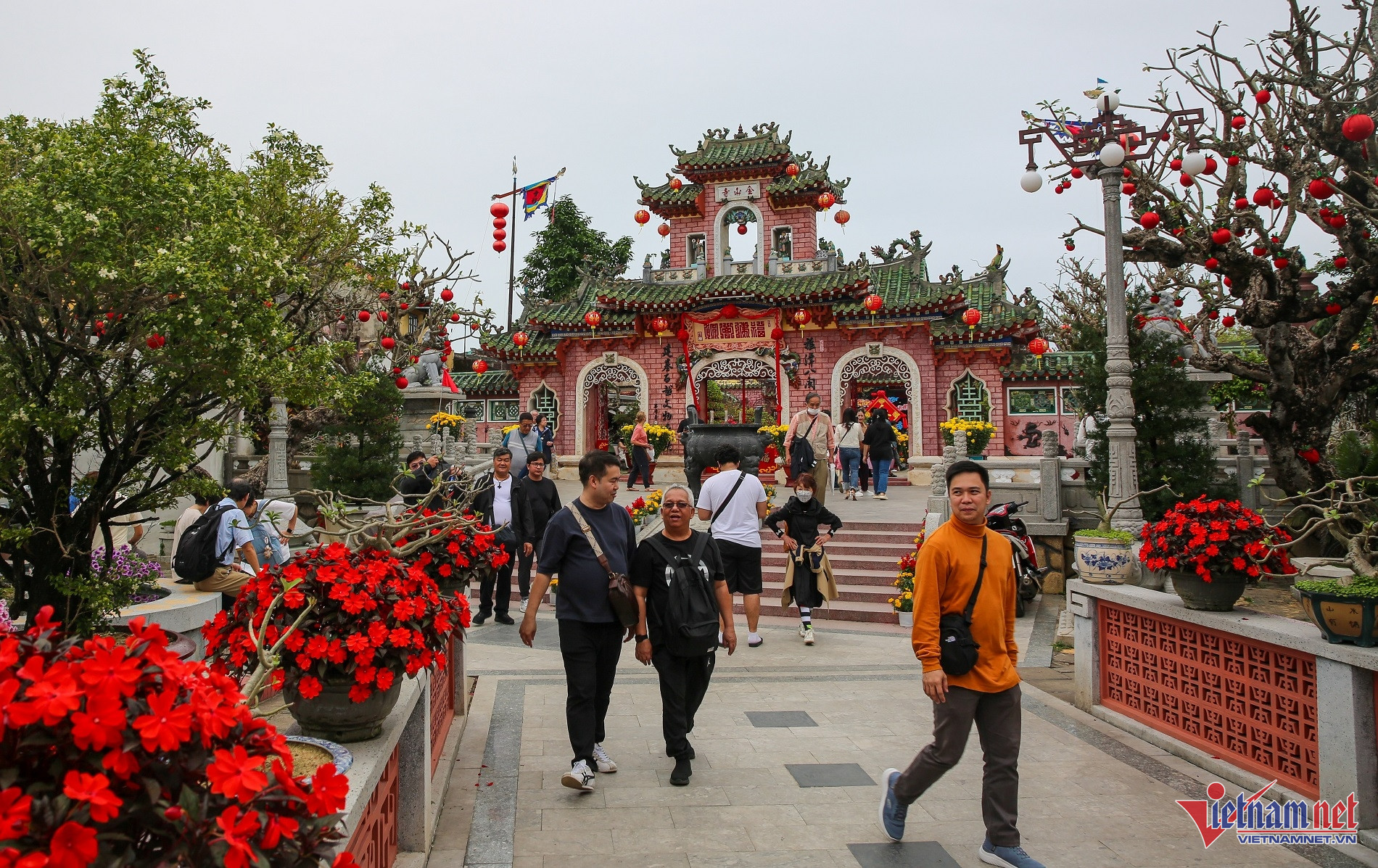
Entrance to the assembly hall
The triple gate (Tam Quan) features yin and yang tiled roofs with curving ridges, adorned with coiling dragons and a pair of stone lions on either side, symbolizing authority and solemnity.
Above the Tam Quan gate are the words “Kim Son Tu.” To the sides of the gate stand Mr. Nhat and Mrs. Nguyet, deities representing the sun and moon, and the yin and yang forces.
From the Tam Quan gate, one can observe three main entrances, each carrying its own significance: Heaven, Earth, and Humanity.
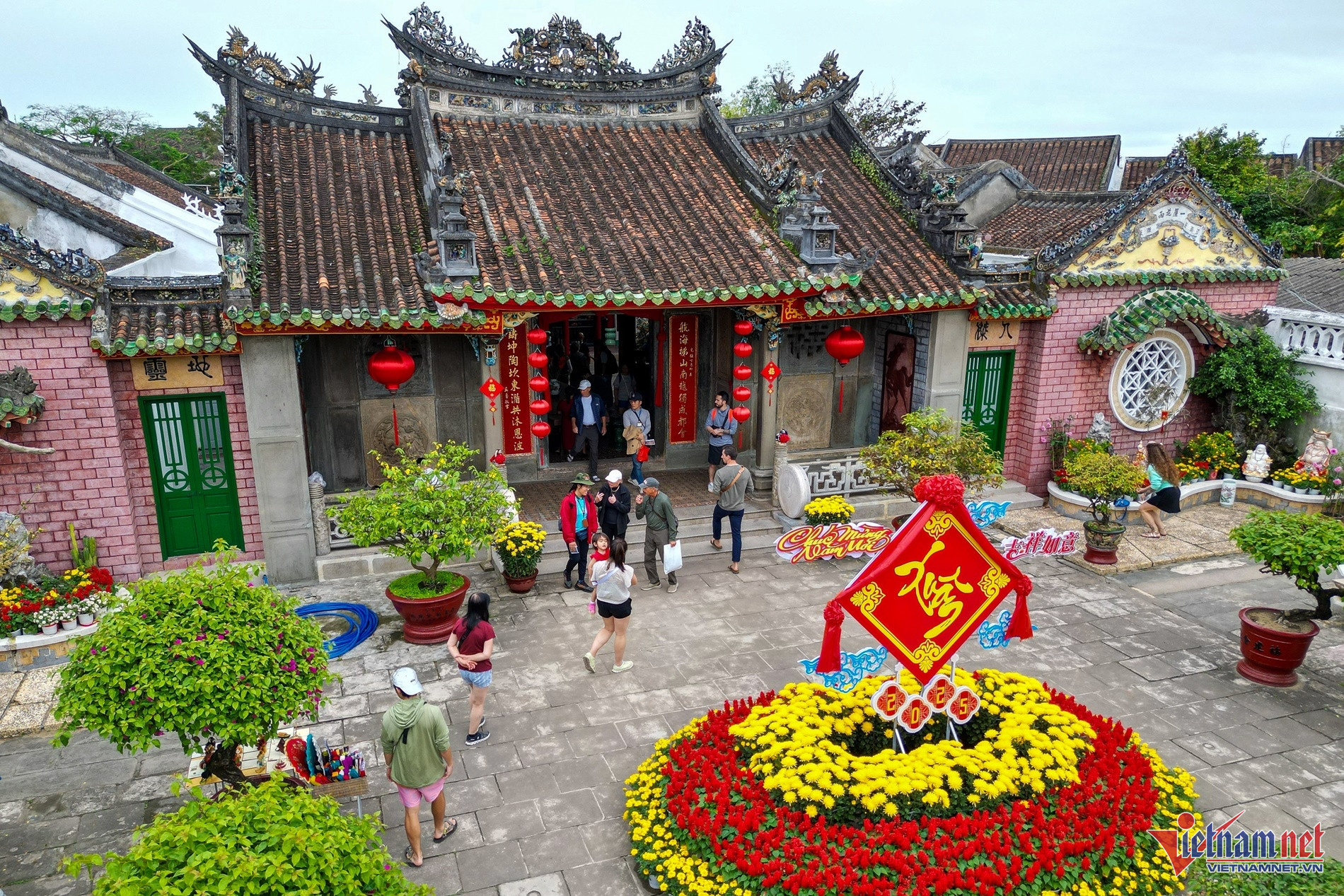
The tiled roofs, weathered by time, lend an air of mystery and sanctity to the pagoda.
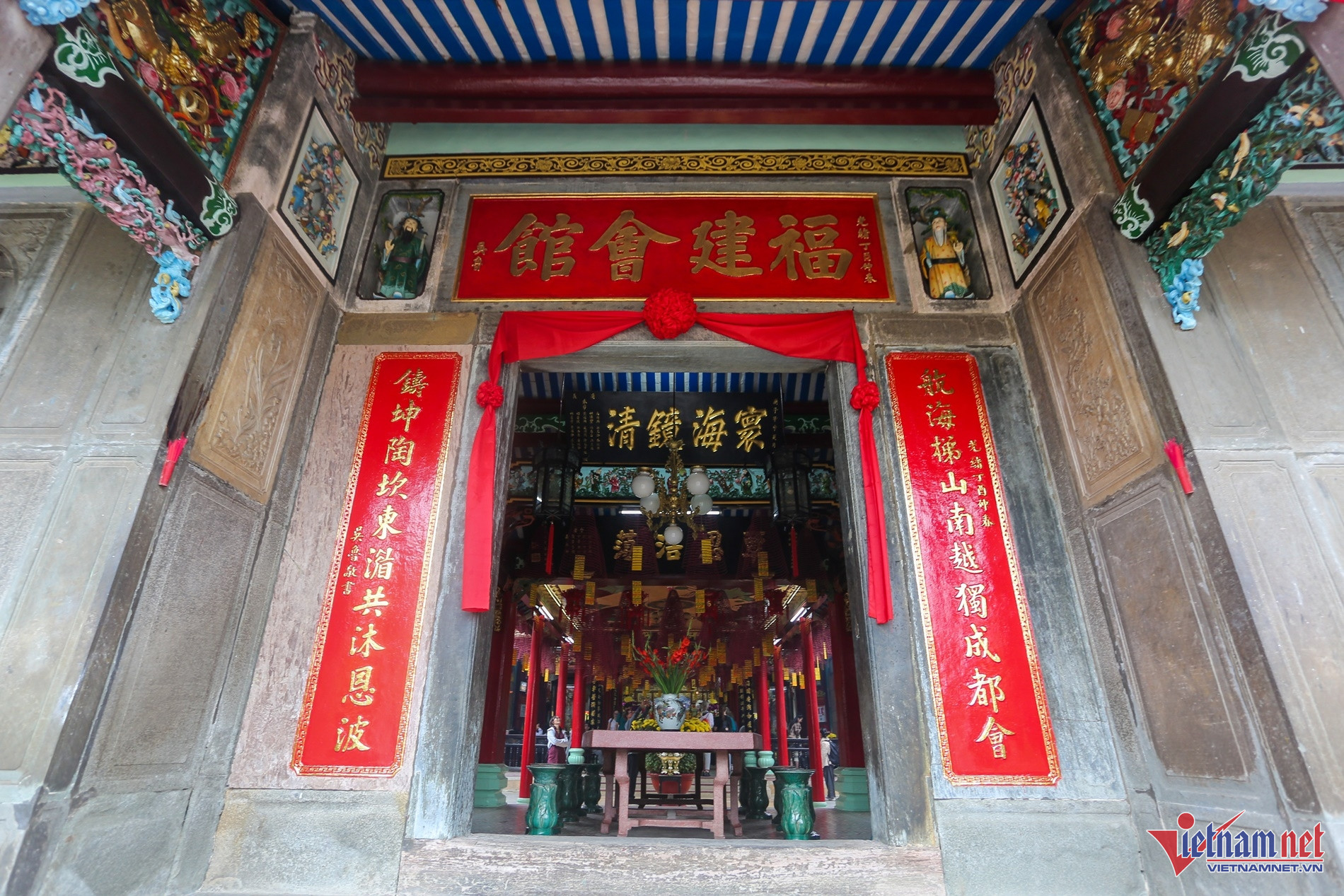
The pagoda showcases a distinctive Chinese architectural style.
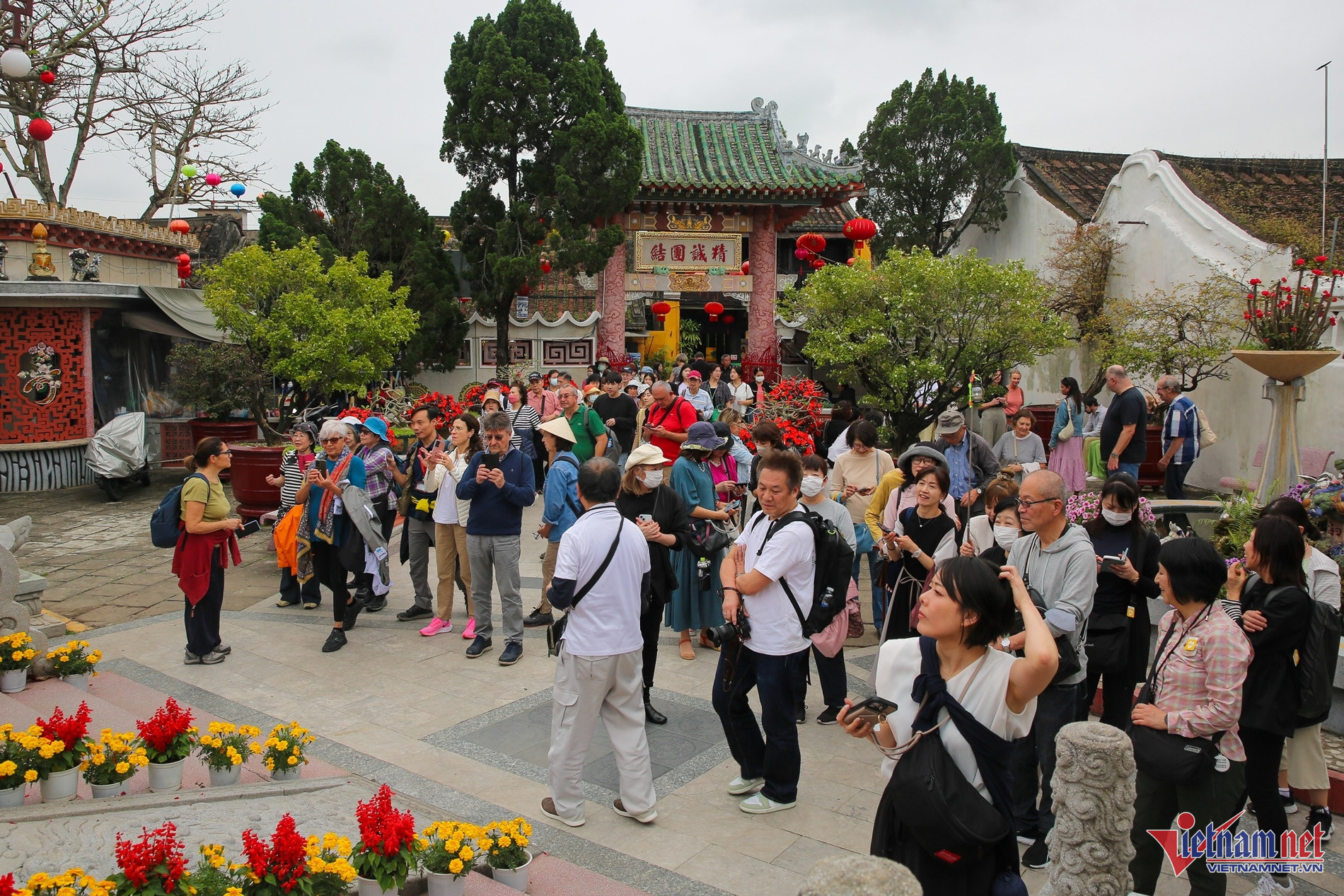
The Phuc Kien Assembly Hall is one of the most popular attractions in Hoi An, drawing large crowds of visitors.
On February 27th, a VietnamNet reporter observed a significant number of visitors at the pagoda, even on a weekday. The management representative of the Phuc Kien Assembly Hall confirmed that they receive thousands of visitors daily, with peak numbers during holidays, the full moon, and the first day of each month.
Unlike traditional Vietnamese pagodas that usually worship the Triple Gem of Buddha and house Buddhist monks, this assembly hall worships Thien Hau Thanh Mau (the Goddess of the Sea) and various deities associated with water, wealth, and fertility.
To enter the assembly hall, visitors pass through a spacious courtyard with a grand, ancient-style entrance. In the front hall, there is a stone table that used to serve as a meeting place for Fujian merchants in the past.
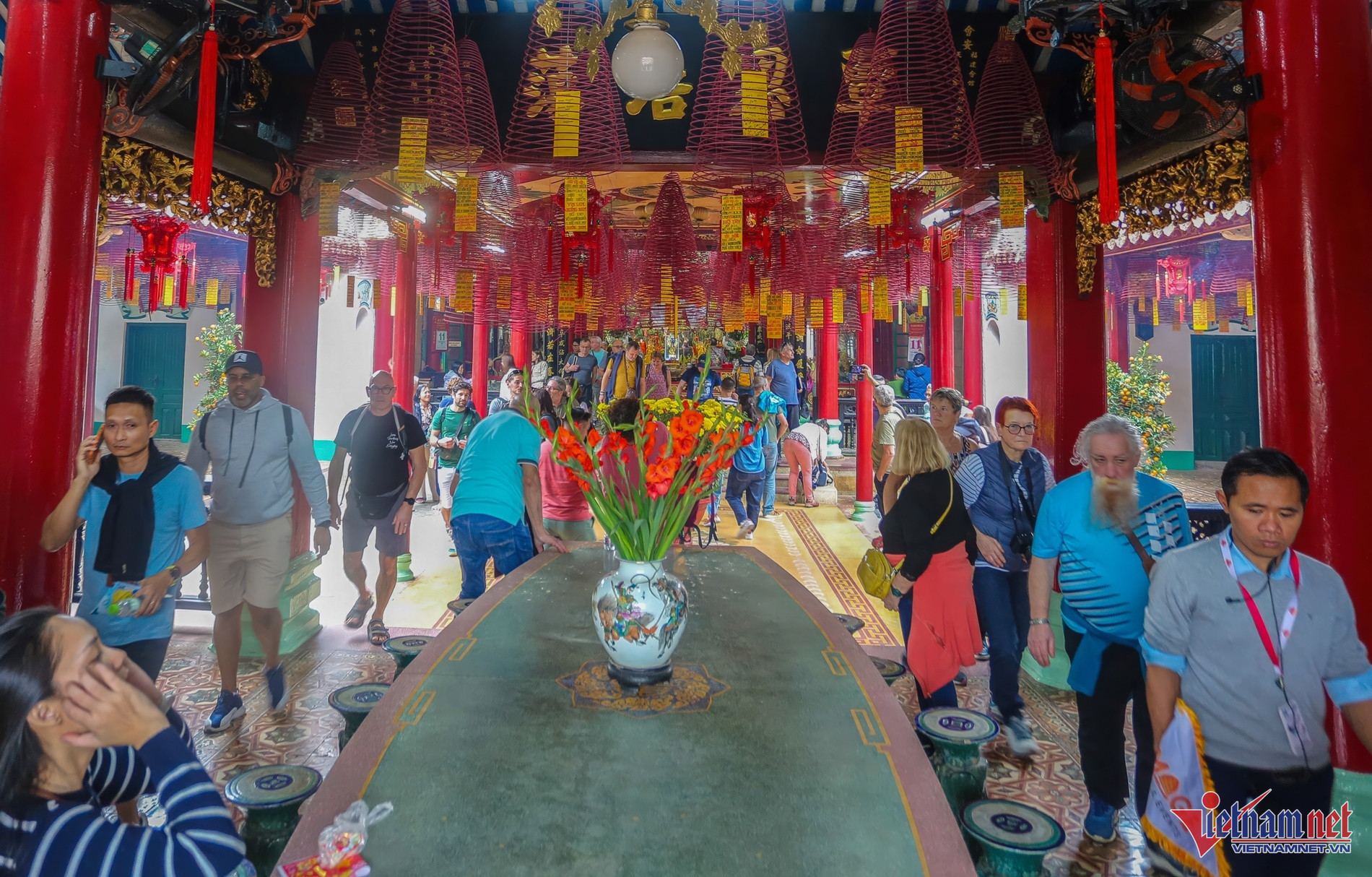
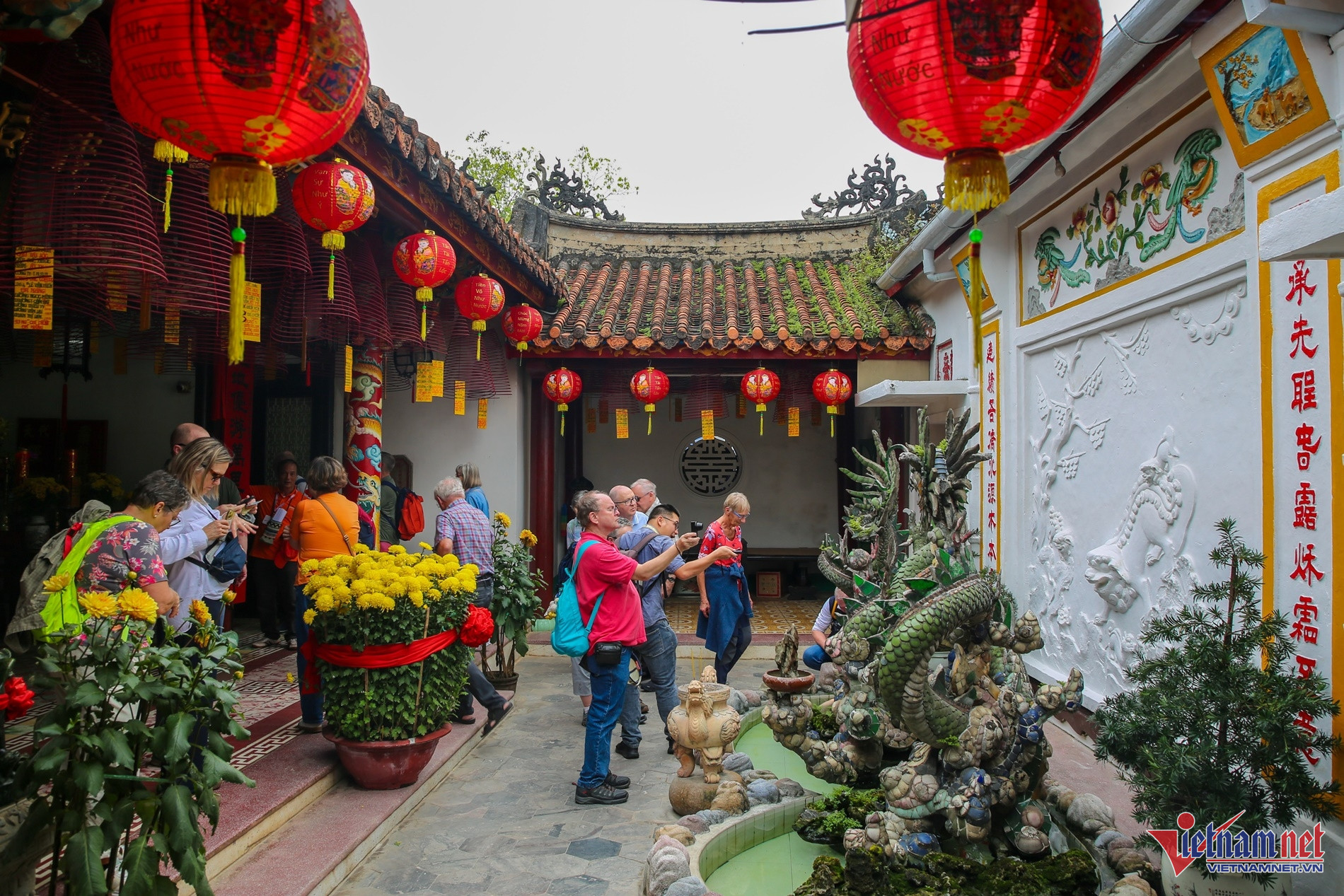
The courtyard features meticulously arranged potted plants, a rock garden, and a statue of a carp transforming into a dragon.
One of the most distinctive features of the assembly hall is the 500 hanging incense coils that stretch from the outer entrance all the way to the main hall. Visitors can purchase these incense coils, write their wishes and prayers on attached paper, and have them hung up high as offerings to the deities.
What’s unique about these incense coils is that they can burn for up to 30 days. Once the incense finishes burning, the management will burn the wish papers, symbolically delivering the prayers to the gods.
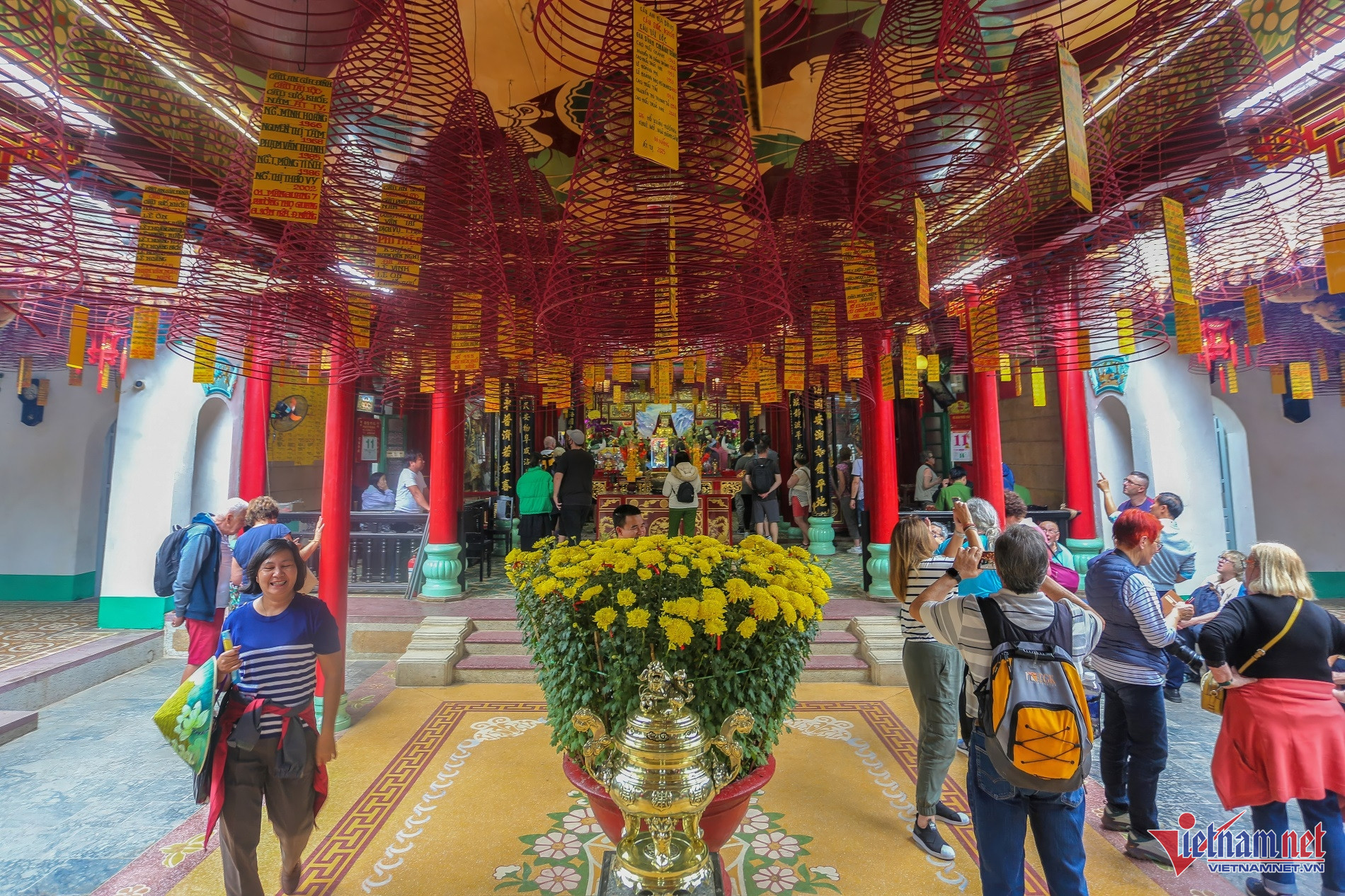
The hanging incense coils are a prominent feature of the pagoda.
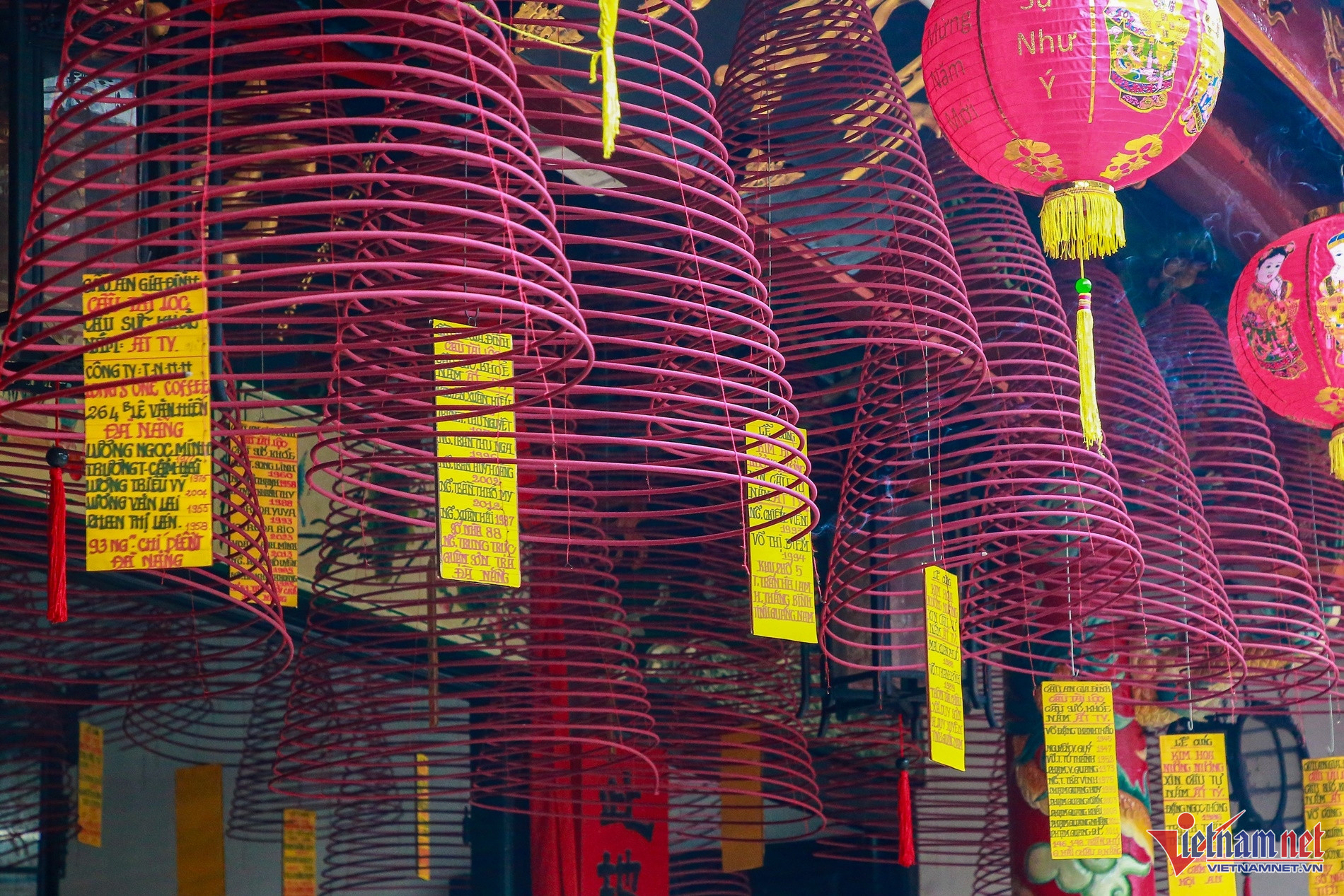
Visitors attach their prayer tags to the large incense coils.
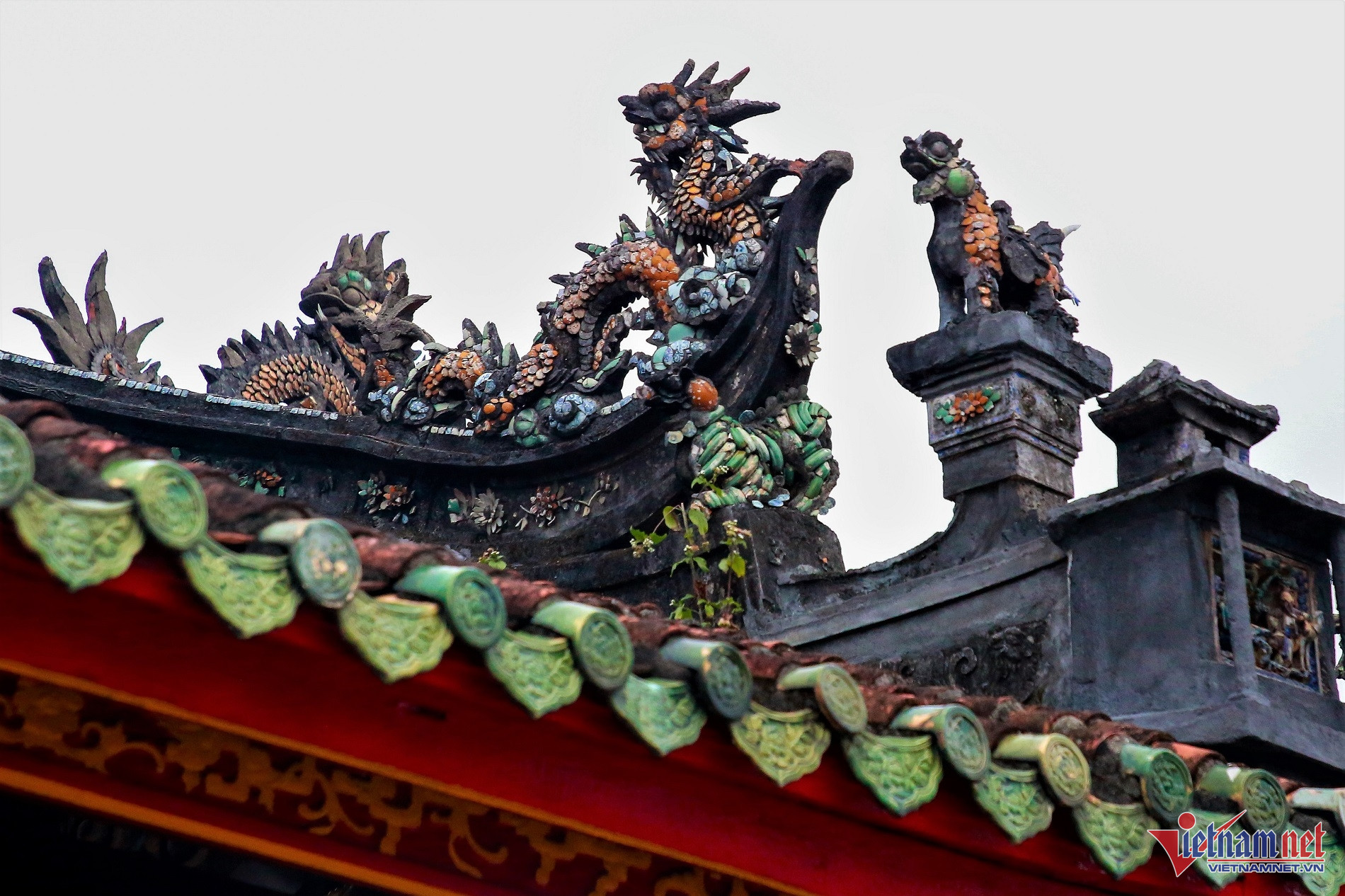
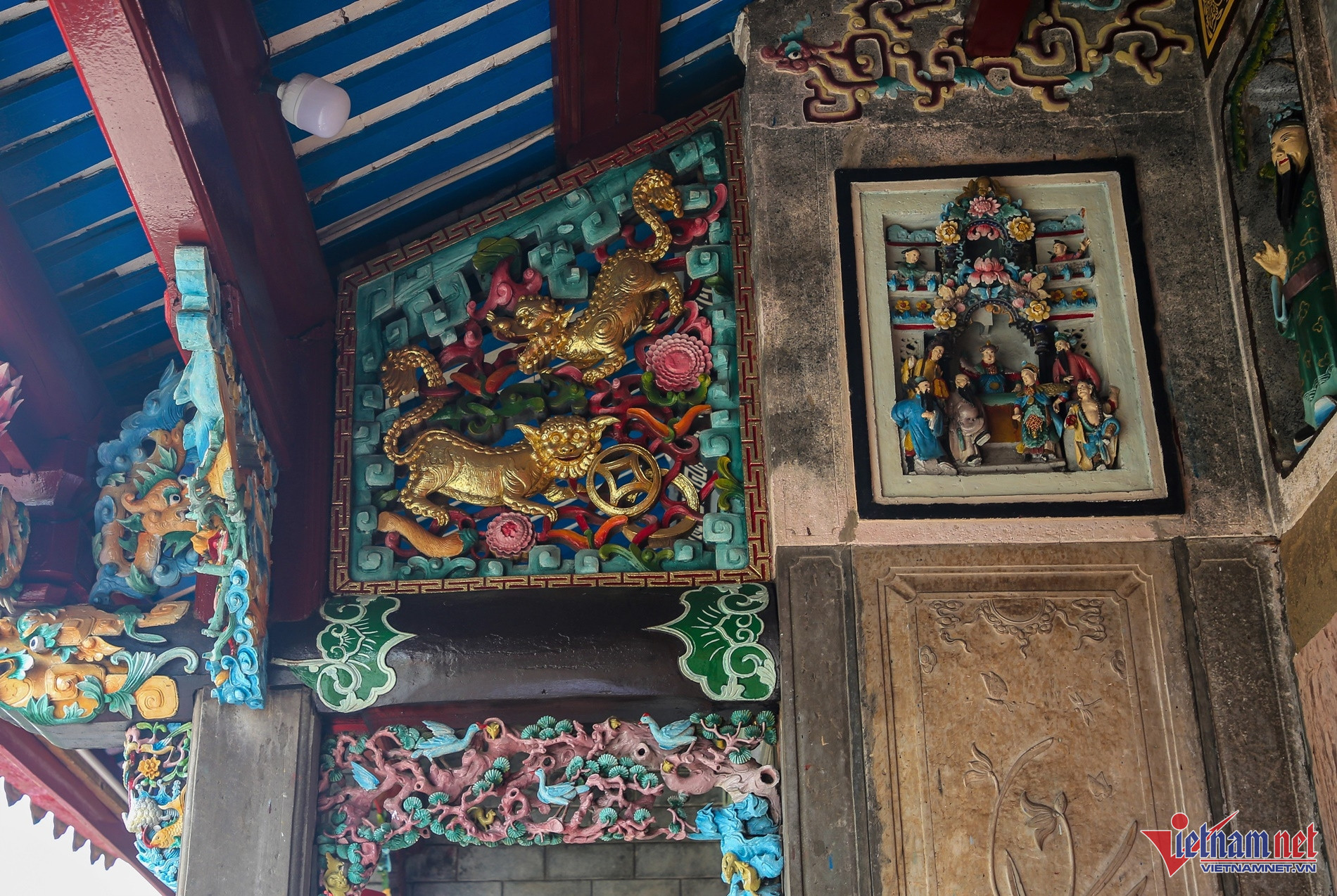
The assembly hall is adorned with intricate patterns and vibrant colors throughout.
Every year, during the Lantern Festival (on the 15th day of the first lunar month) and the Thien Hau Festival (on the 23rd day of the third lunar month), the assembly hall hosts a variety of festive activities.
In 1990, the Phuc Kien Assembly Hall was recognized as a National Historical and Cultural Relic.
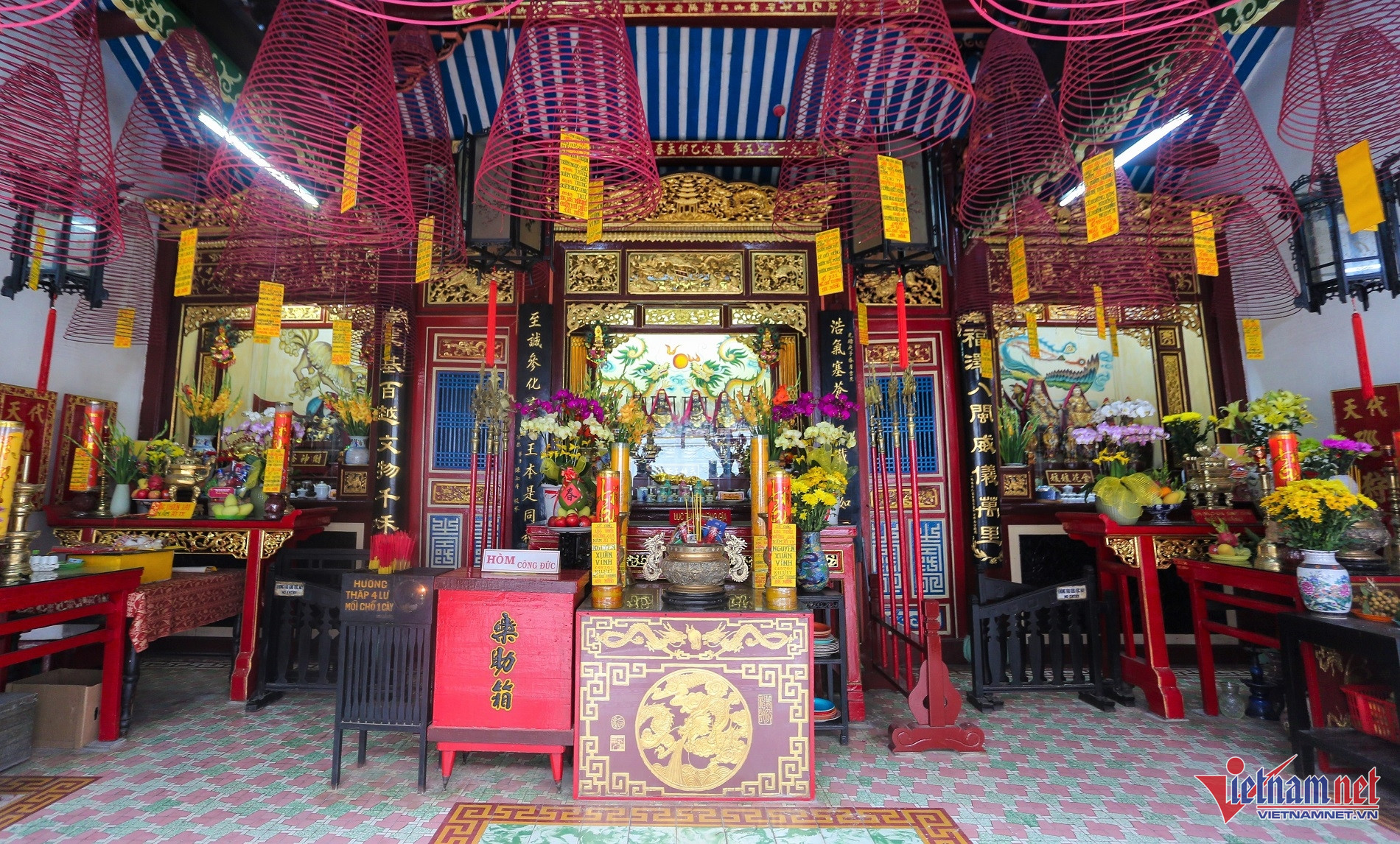
The rear chamber is dedicated to the worship of the Six Tanh Vuong Gia, the Twelve Midwives, and the Three Goddesses of Fertility.
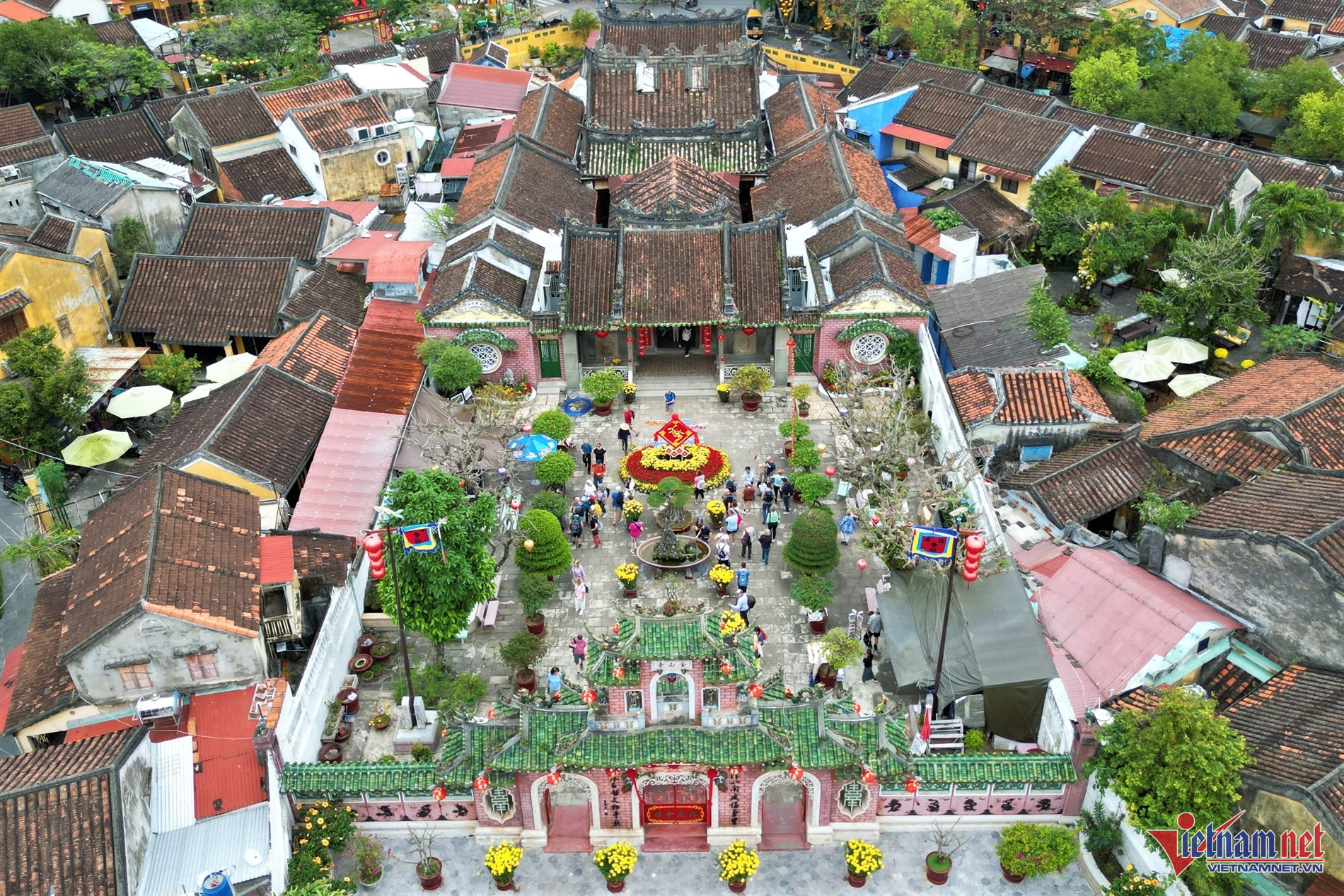
The Phuc Kien Assembly Hall is a must-visit destination when exploring Hoi An.
Despite undergoing several renovations, the pagoda has retained its ancient charm, showcasing the unique architectural style of the Chinese community. It stands as a highlight of Hoi An’s ancient town, attracting locals and tourists alike who come to pray for peace, take photos, and immerse themselves in its serene atmosphere.

































